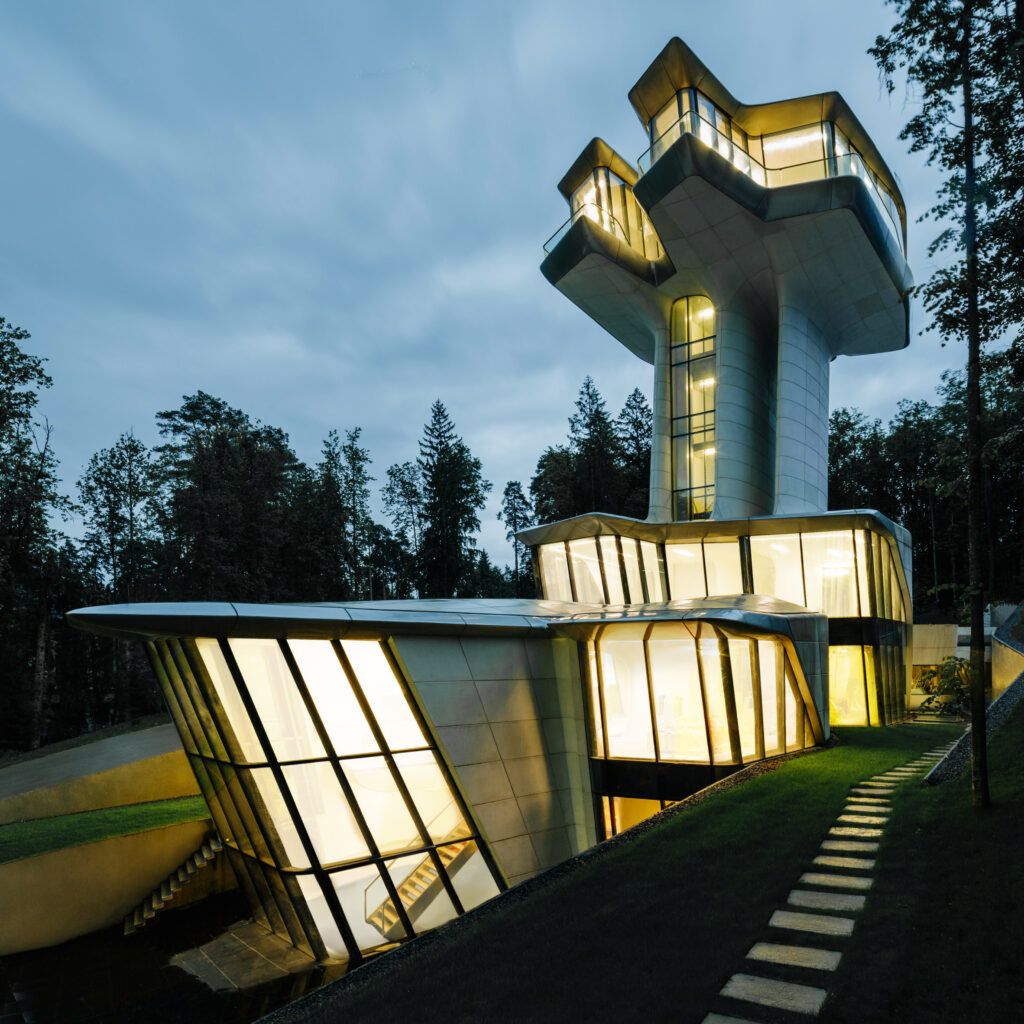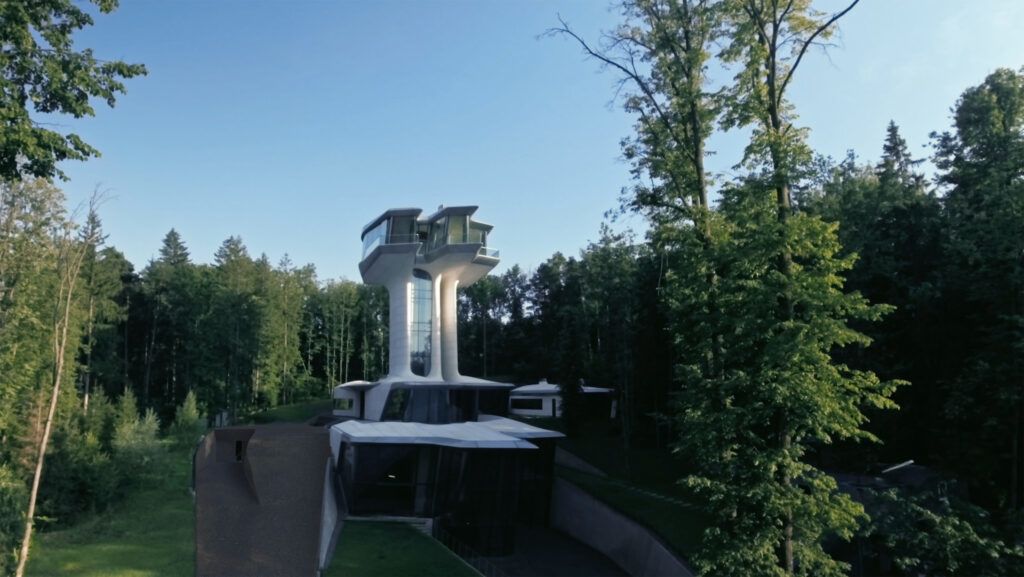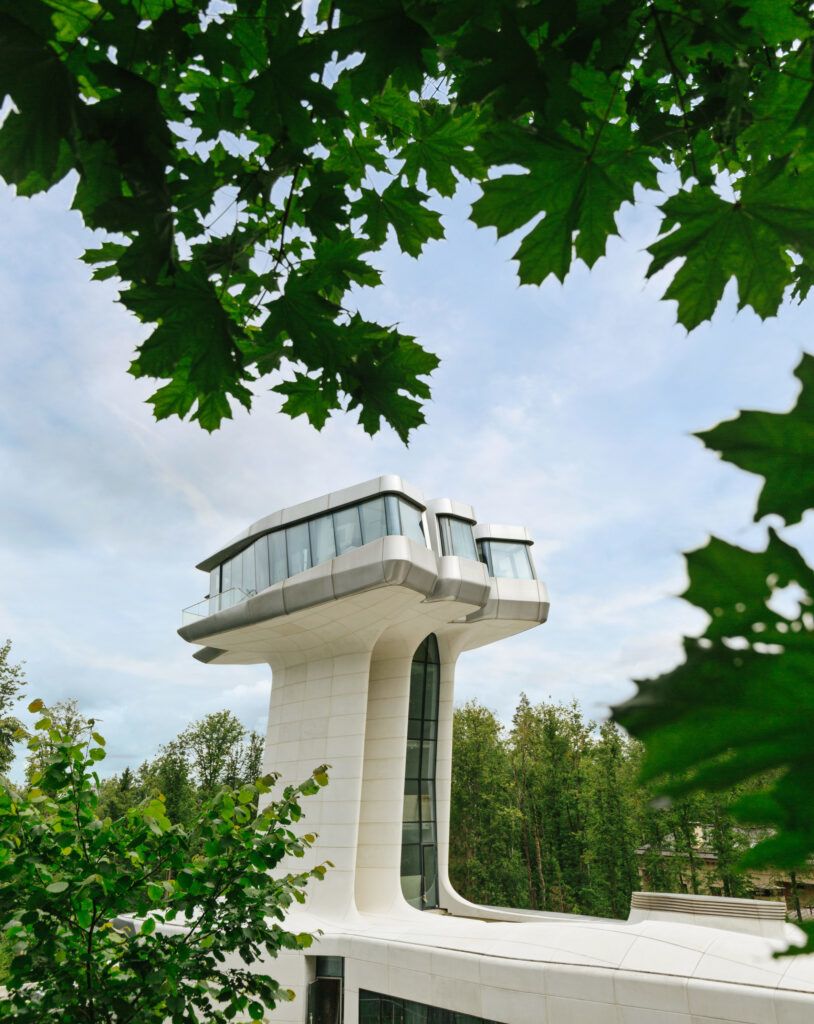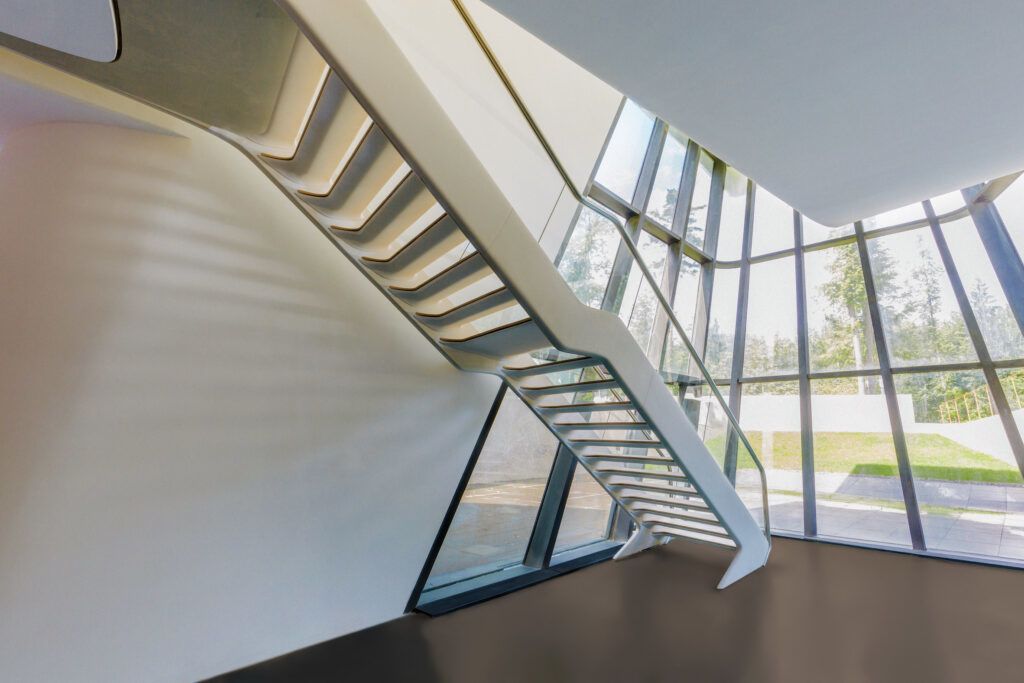Zaha Hadid’s Moscow Forest Home Towers 70 Ft

Baghdad-born Iraqi architect Zaha Hadid is best known for her gravity-defying works of deconstructivist institutional and commercial architecture – it should come as no surprise, then, that her Capital Hill Villa overlooking Moscow should be a massive wonder more luxurious than any mere mortal home.

As in many of her more public works, a mix of steel, glass and concrete towers over its surroundings, definitely an object-in-the-landscape approach. However, a complimentary on-the-ground strategy responds to the adjacent topography and engages the forest as well.


On the lowest level, swimming pools and entertainment spaces compliment essential living, cooking and dining spaces, connected upward via a glass elevator to higher-level bedrooms, lounges and decks shooting up nearly seventy feet into the air.

Again, like many of her more urban projects (and even at its current point of partial completion) there is a sense of movement to the entire structure, and an inbuilt idea that architectural design can and should stand above and outside the environment.

“Located on the north-facing hillside within the Barvikha Forest near Moscow, where pine and birch trees grow up to 20m high, the Capital Hill Residence is divided into two main components. The first merges with the sloping forested landscape, while a separate volume ‘floats’ 22 meters above the ground to benefit from the spectacular views of the forest over the trees.”

“The client, Vladislav Doronin, explained to Zaha Hadid, ‘I want to wake up in the morning and just see blue sky.’ Hadid replied, ‘You realize you have to be above the trees?’”
“The form of the residence is defined by its natural topography with fluid geometries emerging from the landscape and remaining partially embedded within the hillside.”




